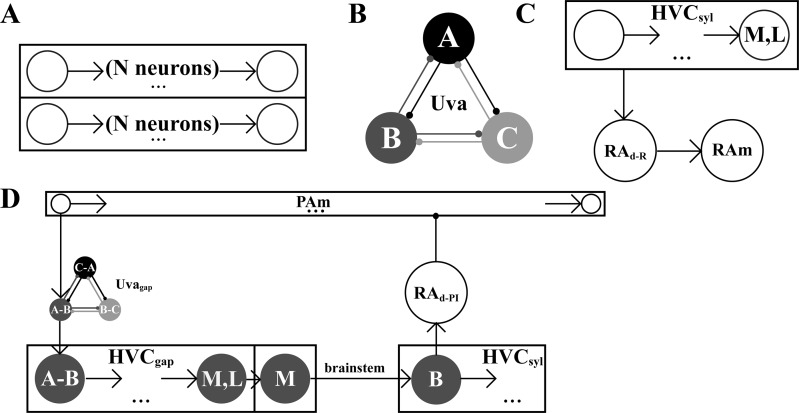Fig. 4.
A: syllables and gaps are encoded in the model HVC by medial and lateral synaptic chains. Arrows represent excitatory synaptic coupling. B: competitive queuing Uva model. Uvasyl and Uvagap are each represented by a set of mutually inhibitory nodes, ensuring that only one node is active at a time. Inhibition occurs through interneurons in the Uva (illustrated here and elsewhere only through circle arrows). C: syllable activity. HVCsyl chains activate brain stem RAm neurons via the dorsal RA neuron population RAd-R. Each of these neurons is syllable specific. D: gap initiation and termination. When PAm activity begins, a signal is sent through an Uvagap neuron that initiates the HVCgap chain. At the end of the gap chain, medial HVC sends a signal through the brain stem that initiates the next syllable chain. The first neurons in each syllable chain terminate PAm activity through dorsal RA. To simplify the diagrams, signals that are sent by both medial and lateral HVC are illustrated by a single chain labeled M,L. Region-specific signals, which occur at the end of HVC chains, are illustrated as a separate node labeled medial only (M) or lateral only (L).

